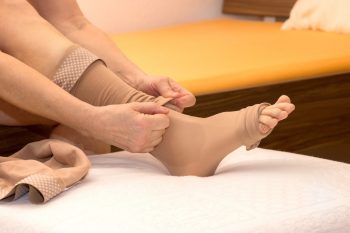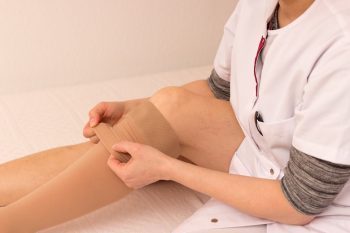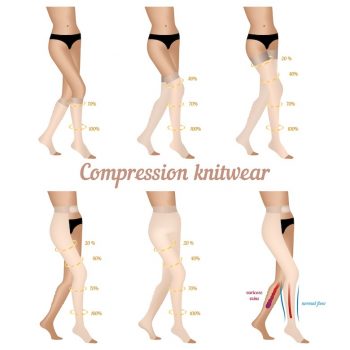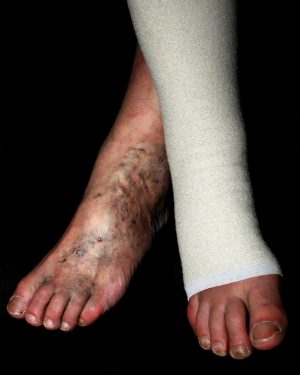How to Find the Right Compression Socks

Why Wear Compression Stockings?
Leg swelling, venous insufficiency, and post-surgical complications are common issues affecting millions of individuals worldwide. Thankfully, one effective solution that offers relief and promotes recovery is the use of compression stockings. These specialized garments have proven to be invaluable in managing these conditions by providing graduated pressure, enhancing blood circulation, and reducing swelling. In this article, we delve into the importance of wearing compression stockings for leg swelling, venous insufficiency, and after surgery, highlighting their significant role in enhancing overall well-being and quality of life.
Understanding Compression Stockings:
Compression stockings are elastic-style garments designed to exert controlled pressure on the legs. They are typically made from stretchable materials that apply the greatest amount of pressure at the ankles, gradually decreasing as they move up the leg. This graduated compression helps to improve blood flow, prevent blood pooling, and provide support to the veins and muscles in the lower extremities.
Beware that cheap imitation compression stockings that you can often buy online may not provide graduated compression, but may instead cause retrograde compression sending the fluid backward. Stick to the main reputable manufacturers: Juzo, Sigvaris, Jobst, and Medi.
Managing Leg Swelling:
Leg swelling, medically known as edema, can be caused by various factors such as prolonged sitting or standing, pregnancy, obesity, or certain medical conditions. Compression stockings play a crucial role in managing this condition by assisting the venous system in returning blood to the heart efficiently. The applied pressure from the stockings helps to prevent fluid accumulation, reduce swelling, and alleviate discomfort. By enhancing circulation, compression stockings promote the removal of metabolic waste products, reducing the risk of complications like deep vein thrombosis (DVT).
Addressing Venous Insufficiency:
Venous insufficiency occurs when the veins in the legs struggle to efficiently return blood to the heart, resulting in blood pooling and increased pressure within the vessels. This condition can lead to symptoms such as leg pain, heaviness, cramping, and the development of varicose veins. Compression stockings offer significant relief by applying external pressure to the veins, assisting their proper function and preventing blood from flowing backward. By supporting weakened or damaged valves, these stockings improve venous return, decrease venous pressure, and mitigate the symptoms associated with venous insufficiency.
Enhancing Post-Surgery Recovery:
After surgery, wearing compression stockings can aid in a patient’s recovery and reduce the risk of complications like blood clots (DVT). Surgical procedures often involve extended periods of immobility, which can significantly increase the risk of blood clot formation. Compression stockings help combat this risk by stimulating blood flow, reducing the likelihood of clot formation, and improving overall circulation. Additionally, they assist in reducing postoperative swelling, alleviating discomfort, and promoting faster healing. By compressing the tissues, these garments provide support to the operated area and minimize the accumulation of fluid, enhancing the body’s natural healing process.
Choosing and Using Compression Stockings:
Compression stockings come in various strengths, lengths, and styles, and it is essential to choose the correct type based on individual needs and the advice of a healthcare professional. Proper fitting is crucial to ensure optimal therapeutic benefits. It is recommended to wear them throughout the day and remove them while sleeping. Adhering to the prescribed usage and care instructions will help maintain the effectiveness and longevity of the stockings.
Shopping for Compression Stockings
Shopping for compression socks or stockings can be mind-boggling. There are just so many options that it is difficult to tell what would work best. In an ideal world, people would consult with a trained fitter such as a Certified Lymphedema Therapist, but let’s face it…everyone shops online.
To that end, I’ve put together some tips for finding the right compression sock for you.
Choose a Level of Compression
Compression is measured in millimeters of Mercury (mmHg), just like blood pressure. The more severe your condition, generally the more pressure you need. Here are the different levels:

15-20 mmHg – “Over the Counter” Compression
This level of compression is great for people who just get a little achy in their legs after standing for long periods – like when they are traveling or playing sports. 15-20 mmHg is very light compression and generally quite comfortable for most people. They can be worn daily.
You can typically find this level of compression at big retailers (like the one with the famous blue sign with white writing). But, buyer beware! These inexpensive brands are not designed with the precision of the pro-manufacturers. Pro Tip: Stick with the pros. Having the right compression socks or stockings makes all the difference when it comes to whether or not you will put them on every day.
20-30 mmHg – Mild Symptom Management & Medical Recovery
Great for anyone with spider veins, swelling after surgery (edema), or mild varicose veins. These are also a daily wearable stocking pressure and would also be great for people who are constantly on their feet (e.g. retail workers).
30-40 mmHg – Moderate Symptom Management, DVT Treatment, Lymphedema
Ideal compression level for people who have medical problems such as a DVT or lymphedema. People who have severe swelling (edema) as well as severe varicose veins or who have undergone surgery recently will benefit from this compression class.
Recover Faster. Feel Better Today.
Book Your Appointment Now Online
505-554-5185
Question? Send me an email.

Knee High Sock, Full Leg Stocking, or Panty Hose?

Knee High Socks
Knee high compression socks are designed to stop at the top of the calf, just below the knee. When choosing your knee high size, make sure that you get ones that stop below the knee. If you try to pull them up and over the knee they are likely to roll down. When this happens, each layer of sock in the roll adds to the compression of the other layers in the roll making a very tight constriction on the leg which can be quite dangerous. With all compression socks or stockings it is imperative that no folds or rolls happen because of this phenomenon.
Thigh High Stockings
Thigh high compression stockings are designed to stop at the place where your buttock meets your thigh. Because they cover the entire leg they improve circulation throughout the leg, not just below the knee. Thigh high stockings often come with a silicone band or beads to hold them in place which is generally sufficient. If not, you can apply an adhesive product called “It Stays” by Jobst.
Waist-High Pantyhose
This style of compression stocking is made of two legs and a torso portion that comes to the waist. There are regular, maternity, and men’s leotard versions available. Because this compression goes up over the hip, it compresses both the inguinal lymph nodes (ones located in the hip crease) and lower abdominal lymphatics. If the legs are swollen due to damaged or removed inguinal lymph nodes, these make for better lymphatic drainage than thigh-high stockings.
How to Choose the Right Length
Choosing the right length of sock or stocking depends on why you are wearing compression. If you are wearing them for a very mild condition such as minor swelling or fatigued legs you can wear whatever is most comfortable for you.
If, however, you have a more serious condition such as lymphedema or severe varicose veins, you should choose a length that completely covers the affected area and then some. The “and then some” is because you don’t want to just push the swelling above the affected area. You want to push it into areas with good lymphatic circulation. Err on the side of more length than you think you need.

How to Choose the Right Material
for Your Compression Stockings
Compression socks and stockings come in a huge array of materials nowadays. They mimic everything from sheer pantyhose to fluffy cotton-like material.
Sheer Stockings for Women
Sheer stockings are a very popular option for many women who want to have compression that matches their wardrobe and looks stylish. Sheer styles are fine for mild conditions such as minor swelling and fatigue, but do not do very well for moderate to severe conditions like lymphedema. They also tear like pantyhose, but they are not nearly as cheap to replace. Opting for an opaque fabric may not be as fashionable, but you will likely get more wear out of the sturdier materials.
Opaque Fabrics
Opaque compression socks and stockings offer durability and come in a variety of thicknesses, ranging from the approximate thickness of thin tights to very sturdy material. The opaque fabric is better suited to moderate swelling, post-operative swelling, and varicose veins. Opaque fabrics tend to be comfortable and are available for both men and women.
High-tech Cotton/Wool Blends for Sports and Active Lifestyles
Active people who are in need of compression often find this material to be the best option because they are super durable while also controlling moisture and heat. They are very comfortable, sometimes even having a cushioned bottom like a tube sock.
Spider veins, varicose veins, mild swelling, and post-operative conditions are all well-served by these sporty socks. Cotton and wool blends are great up to the moderate compression level of 20-30 mmHg, but lose their effectiveness at higher compression levels. People needing 30-40 mmHg or higher should consider one of the opaque fabric options.